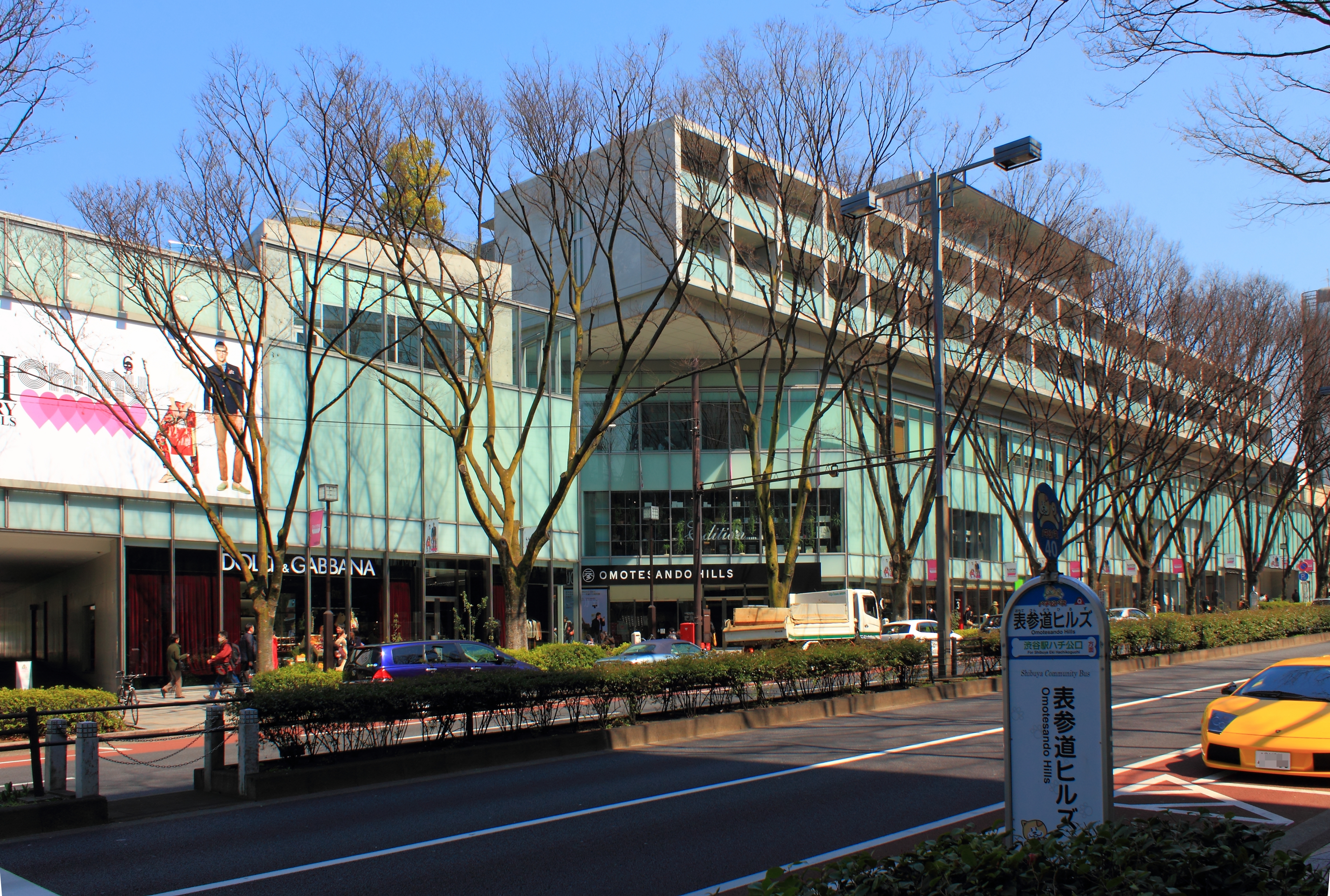Omotesando Hills on:
[Wikipedia]
[Google]
[Amazon]


 is a
is a

 is a
is a shopping complex
A shopping center (American English) or shopping centre (Commonwealth English), also called a shopping complex, shopping arcade, shopping plaza or galleria, is a group of shops built together, sometimes under one roof.
The first known collec ...
in central Tokyo
Tokyo (; ja, 東京, , ), officially the Tokyo Metropolis ( ja, 東京都, label=none, ), is the capital and largest city of Japan. Formerly known as Edo, its metropolitan area () is the most populous in the world, with an estimated 37.46 ...
built in 2005, in a series of urban developments by Mori Building. It occupies a two hundred and fifty meter stretch of Omotesandō
is a zelkova tree-lined avenue located in Shibuya and Minato, Tokyo, stretching from the Meiji Shrine entrance to Aoyama-dōri (Aoyama Street), where Omotesandō Station can be found.
History
Omotesandō was originally created in the Taishō ...
, a shopping and (previously) residential road in Aoyama. It was designed by Tadao Ando
is a Japanese autodidact architect whose approach to architecture and landscape was categorized by architectural historian Francesco Dal Co as "critical regionalism". He is the winner of the 1995 Pritzker Prize.
Early life
Ando was born a few m ...
, and contains over 130 shops and 38 apartments.
The construction of Omotesando Hills, built at a cost of $330 million, has been marked by controversy. The building replaced the Bauhaus
The Staatliches Bauhaus (), commonly known as the Bauhaus (), was a German art school operational from 1919 to 1933 that combined crafts and the fine arts.Oxford Dictionary of Art and Artists (Oxford: Oxford University Press, 4th edn., 20 ...
-inspired Dōjunkai
Dōjunkai (''shinjitai'': , ''kyūjitai'': ) was a corporation set up a year after the 1923 Kantō earthquake to provide reinforced concrete (and thus earthquake- and fire-resistant) collective housing in the Tokyo area. Its formal name was ''Za ...
Aoyama Apartments, which had been built in 1927 after the 1923 Kantō earthquake. The destruction of the apartments again raised questions about Japan's interest in preserving historic buildings. A small section of the old apartments is reconstructed in the South-East part of the new complex.
Minoru Mori noted that there had been resistance from local landowners to the use of Ando as architect, saying that they were concerned that his buildings were too fashionable for the area.
Regarding the construction, Ando said, "It's not Tadao Ando as an architect who has decided to rebuild and make shops, it was the owners themselves who wanted it to be new housing and to get some value with shops below. My task was how to do it in the best way.”
References
External links
* {{coord, 35.66725, N, 139.70874, E, source:placeopedia, display=title Shopping centres in Japan Buildings and structures in Shibuya Tadao Ando buildings Shopping malls established in 2005 Harajuku Mori Building 2005 establishments in Japan